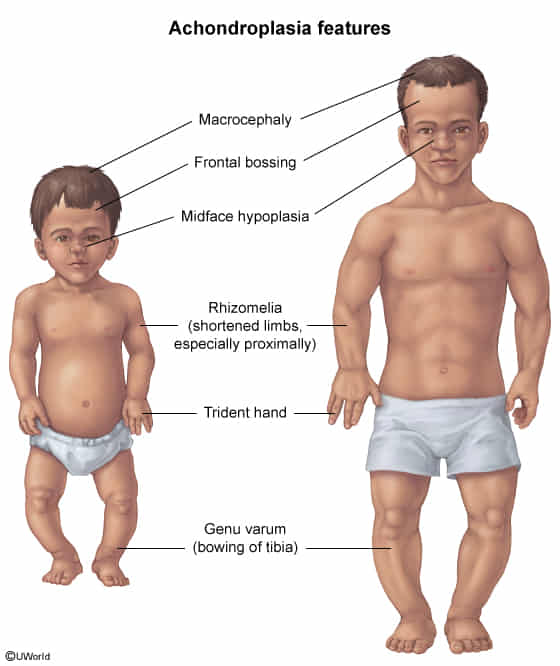Tip
Think of Tyrion!
Epidemiology
- Most common type of skeletal dysplasia
- Most common cause of disproportionate short stature
Etiology
- Gain of function mutation in fibroblast growth factor receptor 3 gene (FGFR3) on chromosome 4
Pathophysiology
- Defective FGFR3 → continuous receptor stimulation by FGF → inhibited chondrocyte proliferation → ↓ endochondral ossification → impaired longitudinal bone growth
- Normal intramembranous ossification of the craniofacial bones → disproportionately large head in relation to the limbs
Tip
GH deficiency can lead to proportional short stature (both long and flat bones affected) as opposed to the disproportionate short stature seen in achondroplasia (only long bones affected).
Clinical features
- Short stature: Disproportionate, with rhizomelic shortening (proximal limbs, i.e., humerus and femur, are shorter than distal limbs).
- Head/Face: Macrocephaly with frontal bossing and midface hypoplasia.
- Trunk/Spine: Normal-sized torso with exaggerated lumbar lordosis and thoracolumbar kyphosis.
- Hands: Short fingers with a trident hand appearance (divergence of middle and ring fingers).
- Intelligence and life span are typically normal.

